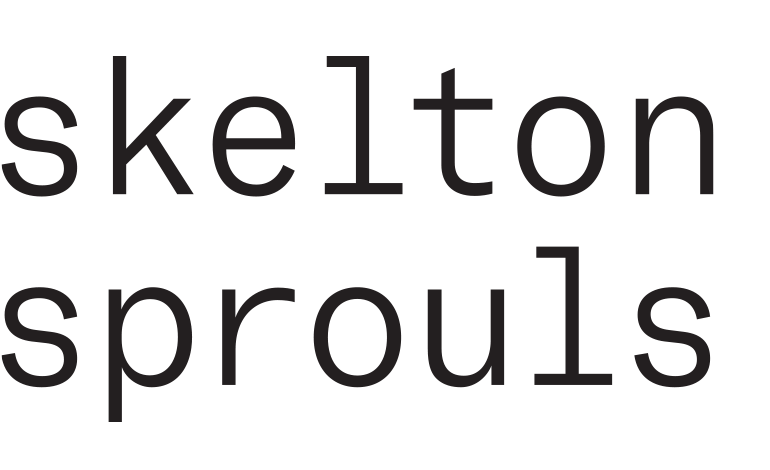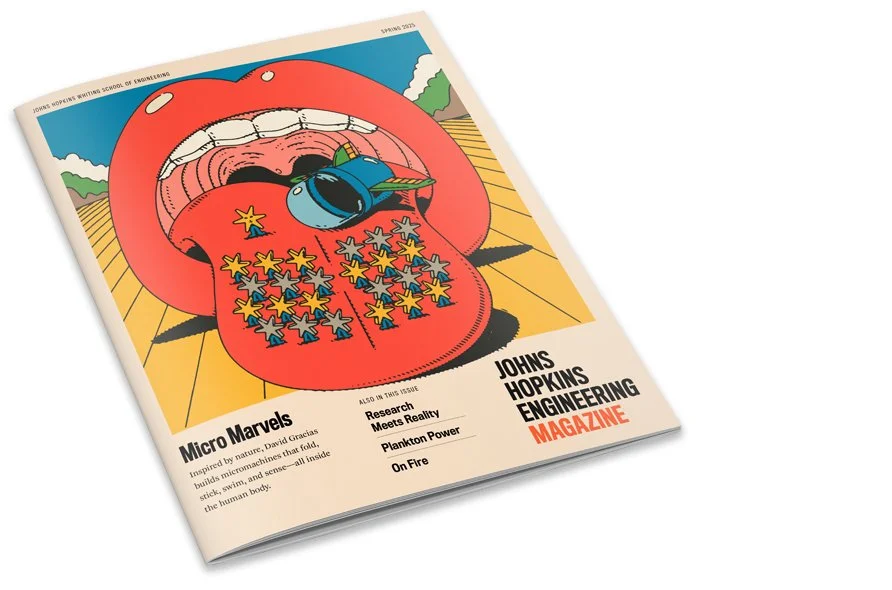To guide our redesign of Johns Hopkins Engineering magazine, we underwent a discovery and strategy process with the editorial team, identifying the magazine’s strengths as well as areas for improvement. This resulted in an editorial blueprint that reimagined the entire magazine.
We built the structure around five recurring feature areas: faculty innovation, student discovery, a 2-page visual feature, a “flexible” feature, and enterprising alumni. This created a rich, in-depth feature well with multiple stories and varied pacing.
“It looks fantastic! I love it. We’re getting lots of positive feedback.”
— Abby Lattes, Director of Communications
Setting the Scene
The new magazine opens with a letter from the dean and Scene – a one-page recurring department consisting of a high-impact, full-page photo capturing a timely moment in the life of JHU Engineering. A two-page table of contents follows, with highlights from all five features. A short 2-page news section, Currents, precedes the 32-page feature well.
Impact, Inquiring Minds, Changemakers
The faculty, student, and alumni sections are anchored by a mini table-of-contents on the opening page, followed by a longer lead feature story and numerous shorter articles that capture the broad expanse of faculty research, student learning, and alumni coverage.
Among the shorter articles in each section are unique, recurring departments such as How It Works – deconstructing faculty research, Cited – a round-up of faculty research in peer-reviewed journals, Quiz-Me – a playful way to highlight research findings, Change Agents – highlighting student innovators, and Course Audit – tapping into the student learning experience.
Envisioned – The Big Picture
Breaking up the longer featured sections is a two-page visual feature that puts the emphasis on an impactful image supported by a short story and data bits or annotations. A wide variety of subject areas can be explored issue to issue. The first redesigned issue showcases Plankton Power – how electricity can be generated from dissolved organic matter.
Flex Feature
A short four-page feature provides the flexibility to highlight subjects that might not fall neatly under one of the standing feature areas. The first redesigned issue includes the story, On Fire – how a professor of engineering is making structures safer by better understanding heat transfer.
Closing Out
We end the magazine with two recurring departments. History Made celebrates JHU Engineering’s enduring impact on the world by looking back in history to commemorate key advances made by Hopkins-affiliated engineers. Asked & Answered closes out the issue by asking three different JHU Engineering experts to respond to a question about a subject in their field in a way that is accessible to lay readers.














